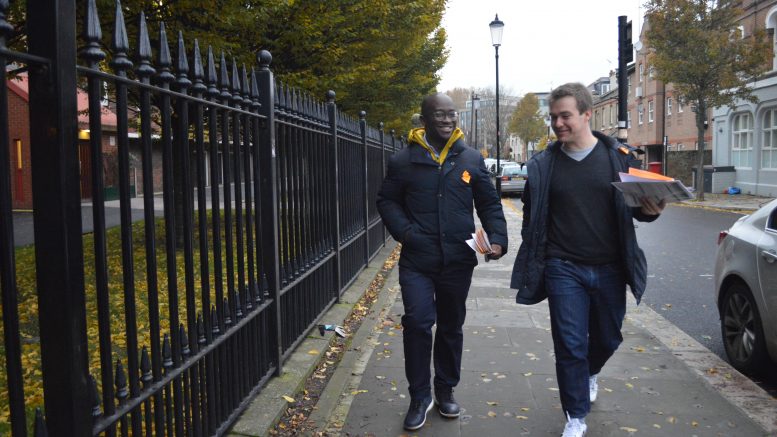London is home to 73 constituencies, two of which were decided by less than 50 votes in the 2017 general election. The Tories fought off the Liberal Democrats in Richmond Park by a slender victory of 45 votes, and north of the river, Labour’s Emma Dent Coad defeated the Tory candidate by less than half of that figure in Kensington; 20 votes was all that separated the score – a result so narrow there were three recounts.
When a seat is closely contested, it’s sayings like “every vote counts” that become so definitively pronounced. Marginal seats, such as Kensington, will be a guaranteed battleground where candidates take to the street in order to sway voters.
Canvassing can be a lot of what you’d expect: nobody’s home or interaction can struggle to go beyond an intercom doorbell because the occupant is busy (uninterested). But when a competition is as fierce as the west-London constituency, that’s not always the case.
Tagging along with the Liberal Democrat candidate Sam Gyimah – who defected from the Tories over Brexit in September – out canvassing, no effort is being spared to win the seat being labelled a three-horse race.
Straight after crossing the road from where Gyimah had rallied and enlivened his team – sporting stickers and rosettes and carrying armfuls of flyers – before dispersing the yellow assembly down designated routes, he finds himself on the same street as Conservative candidate Felicity Buchan, who is also canvassing.
“Lovely to see you,” Gyimah calls across the street jovially, while Buchan continues to ring the doorbell of the house in front of her, “good luck!” Under a grey November sky that’s growing darker by the minute, neither stop. Swiftly moving on to the next block of flats, determined to talk to as many constituents as possible.
Before the 2017 general election, Kensington had always been a loyal seat for the Conservative Party, never swaying from blue in its history between 1974 and 1997 and 2010 until – the more wonted – early summer election of 2017 (between 1997 and 2010 the constituency expanded to Kensington and Chelsea, but nevertheless remained blue).
And so, a new chapter began for the constituency in June 2017, when the Dent Coad took charge and turned it red. But what changed?
Well, between the 2015 general election and the last one, the United Kingdom voted to Leave the European Union. However, Kensington voted overwhelmingly to Remain by 68.9%.
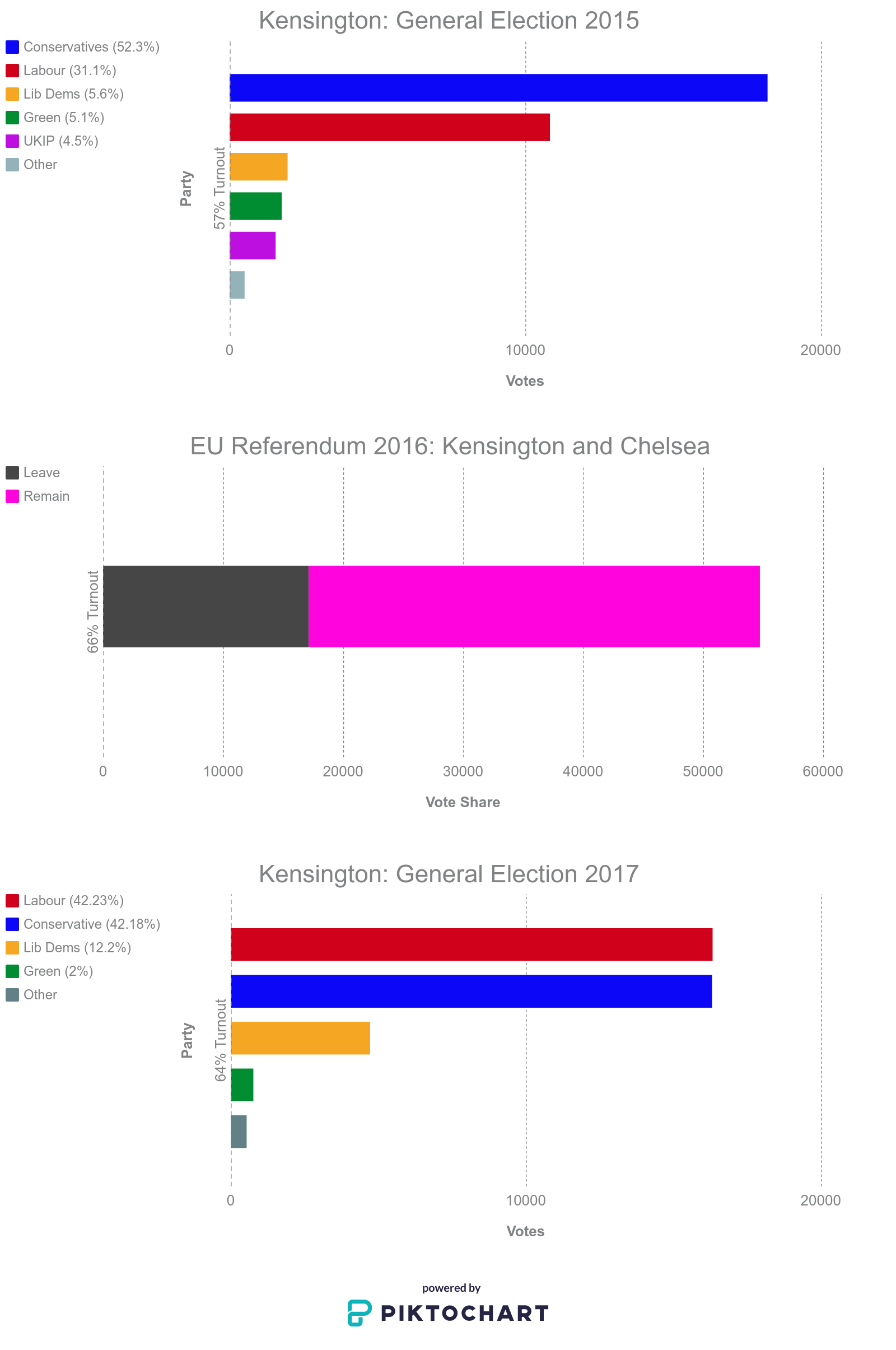
Dan Branston
Leaning over an iron railing, Gyimah talks to a resident that appears at a downstairs window to see who is rapping on the door. Their response seems a congruent one: torn, dubious about who vote for, and, most excitingly, prepared to talk politics.
What a constituent voted during the EU referendum will be imperative to how parties intend to target and snatch these swing seats this winter, but Brexit isn’t the only thing Kensington is looking for answers on.
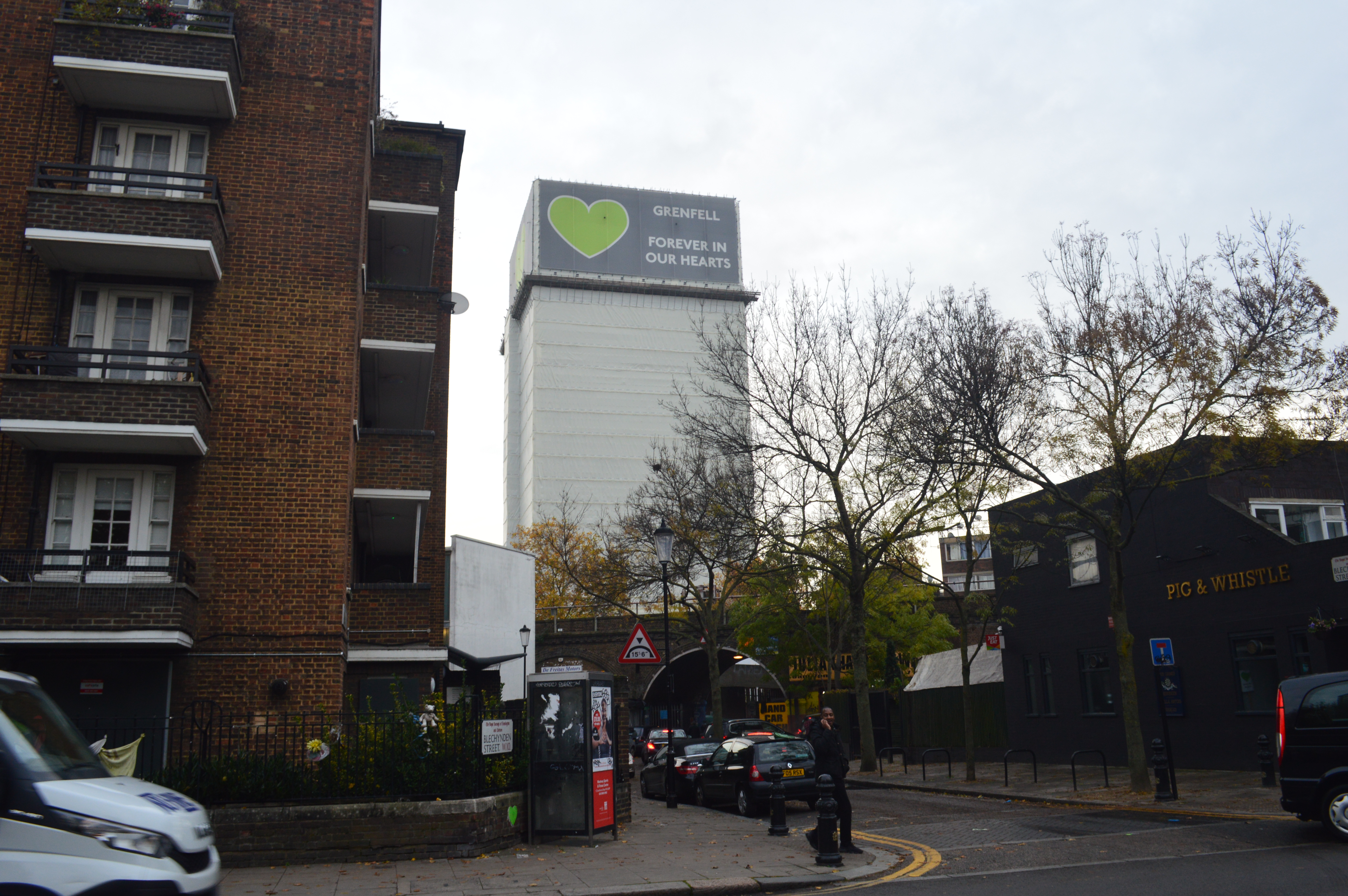
Grenfell Tower in 2019; Pic: Dan Branston
In 2017, six days after the general election result, one for the biggest disasters in modern British history took place in North Kensington: six minutes before 1am on 14 June, a fire broke out in Grenfell Tower, spreading rapidly and killing 72 people.
The tragedy surfaced alarming issues integrated within the Borough of Kensington and Chelsea, drawing attention to the social division, an issue so pervasive that it can fluctuate depending what side of the street you’re standing on.
Trust for London, a foundation set to tackle poverty and inequality in London, released a study into London’s smallest borough in 2017, concluding:
- The borough has the highest average income in London, despite pockets of deprivation
- Concentrated in the north of the borough, there are above average poverty rates – including child poverty, and receipt of out-of-work benefits
A report by Sky News at the turn of this year stated that out of the 10 most expensive streets in England and Wales, the borough of Kensington and Chelsea hosts seven. The results are listed on the map below:
[googlemaps https://www.google.com/maps/d/embed?mid=1yVsw9-F2sXYK3Z59z2lPxM1g4zVa8iMP&w=640&h=480]
Map: Dan Branston
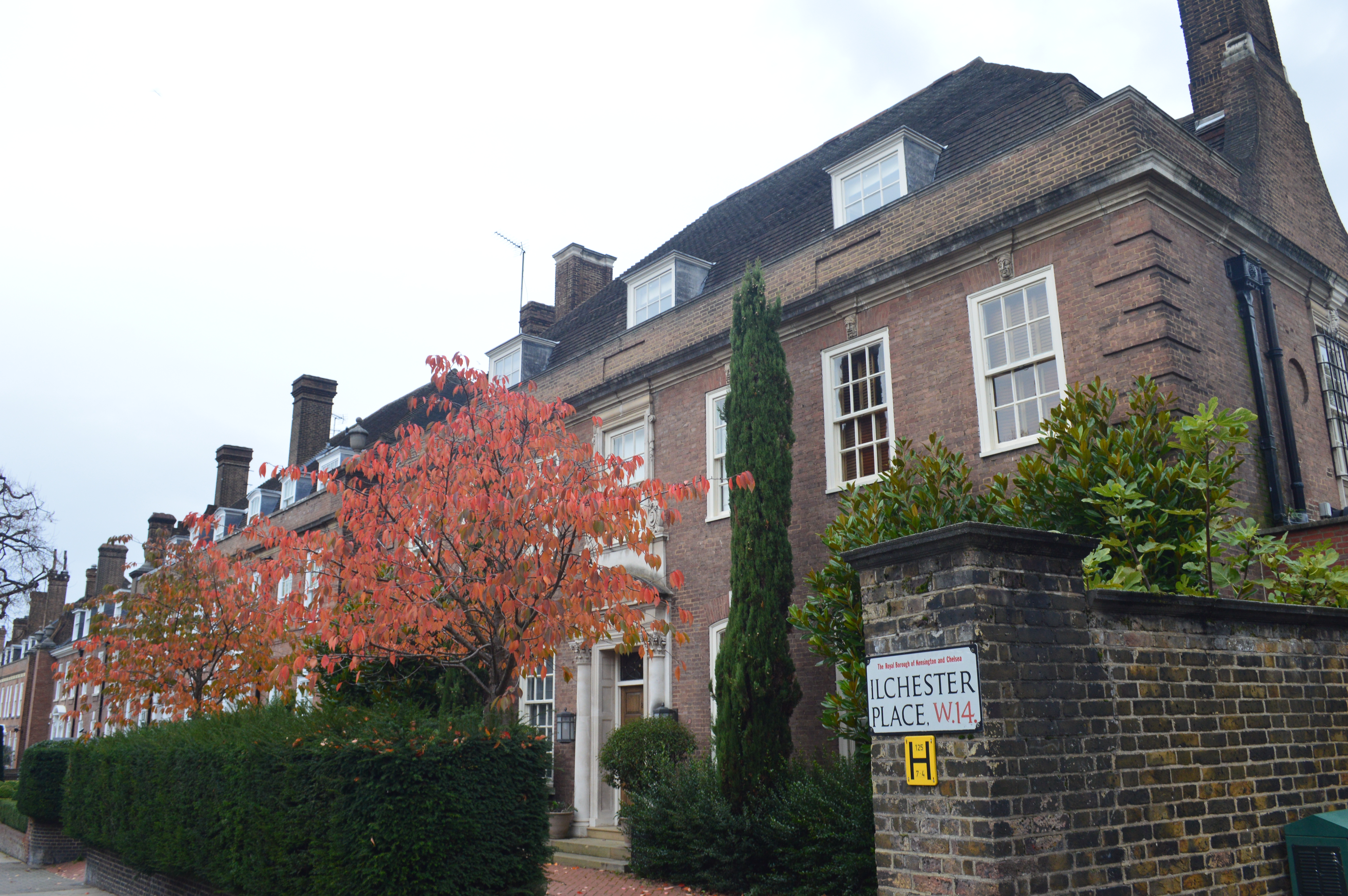
Ilchester place was ranked the most expensive street in England and Wales in 2018; Pic: Dan Branston
The opulent façade associated to Kensington covers deep-rooted deprivation; something that is unavoidable for the candidates looking to win the seat this December.
List of candidates standing in Kensington:
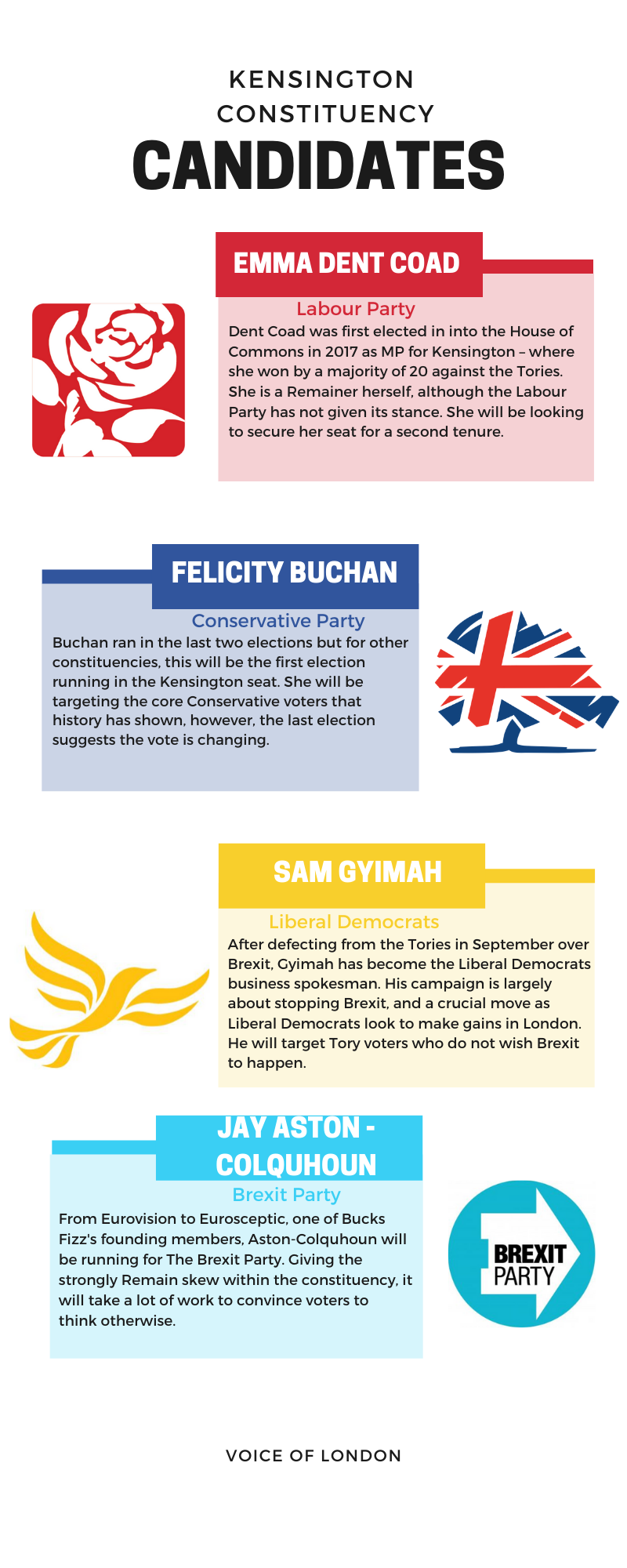
Dan Branston
Scott Dore – Workers Revolutionary Party, Adimora Gore – Touch Love Worldwide, Aviva Lichtenstein – Green Party, David Phillips – Christian Peoples Alliance
words; Dan Branston

